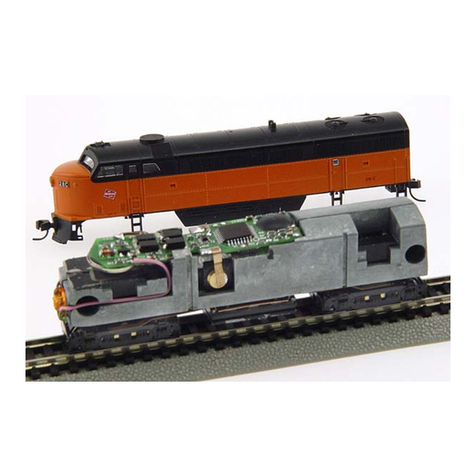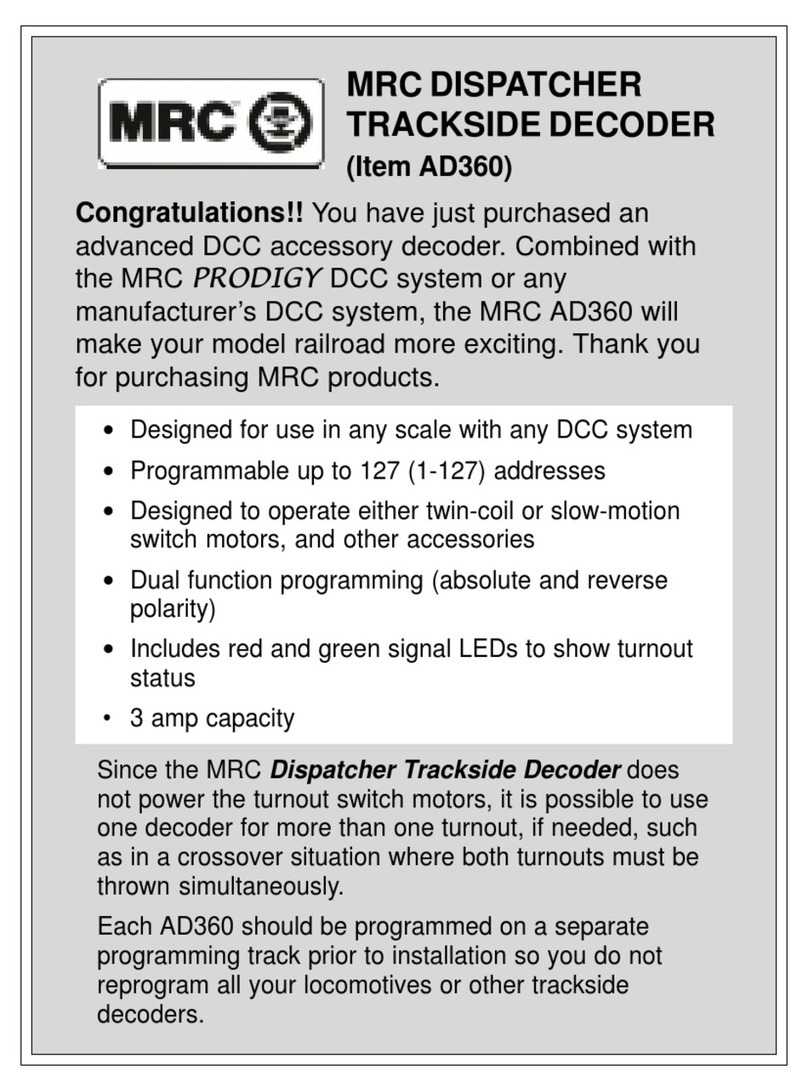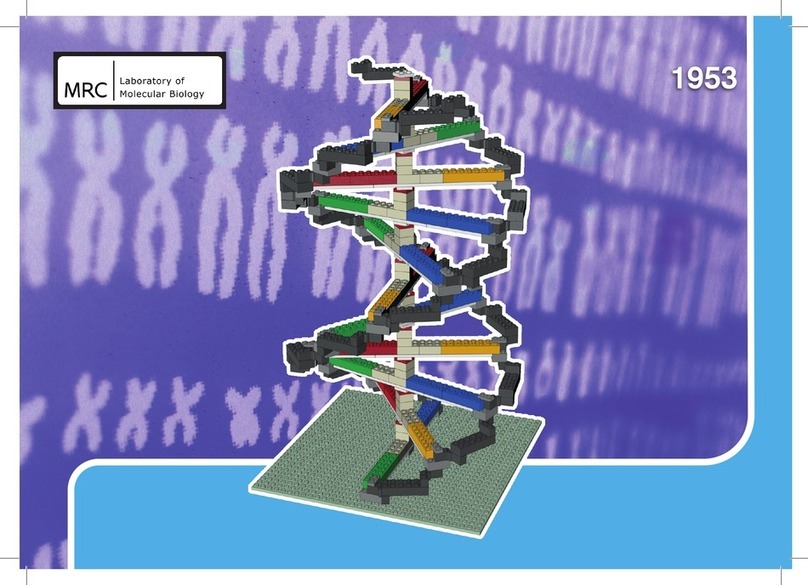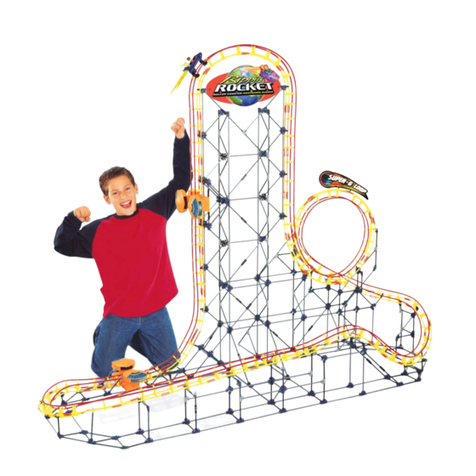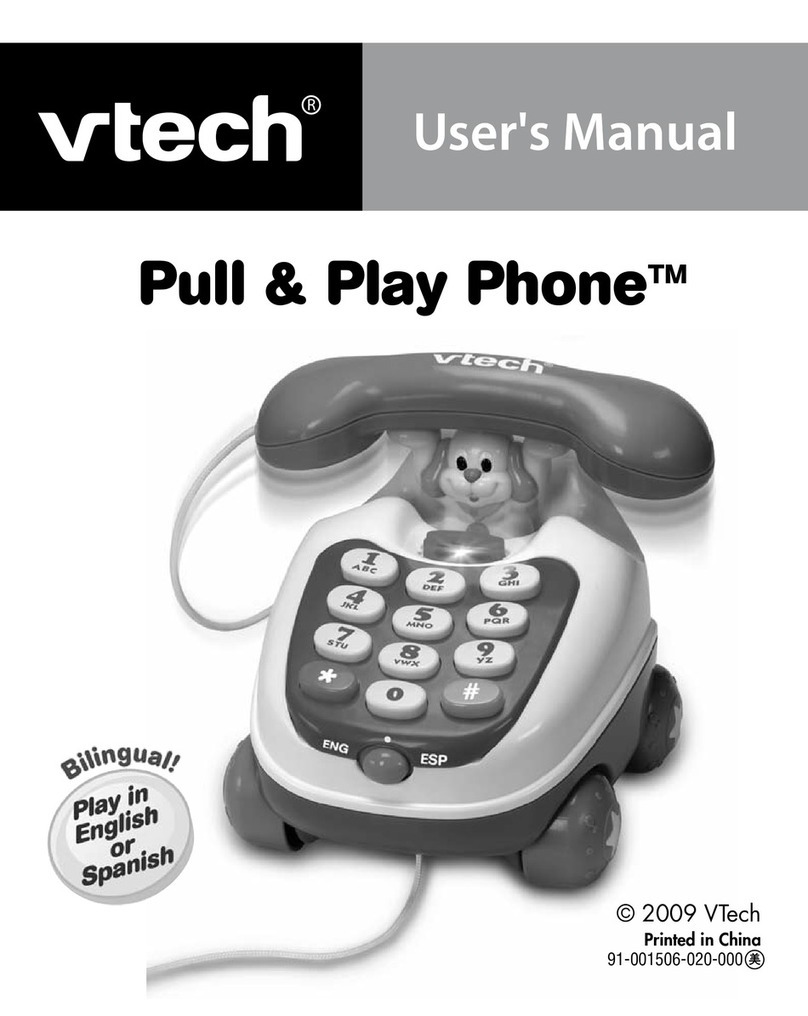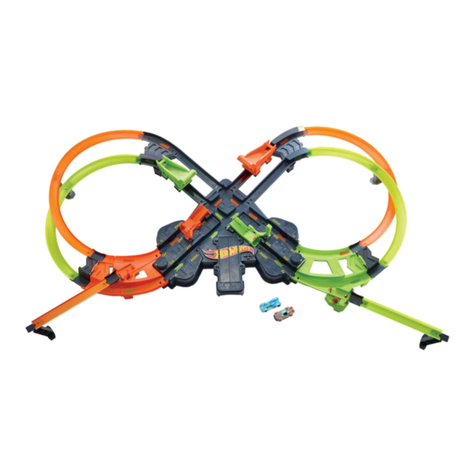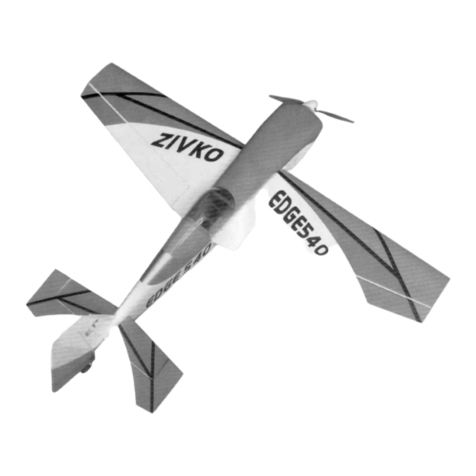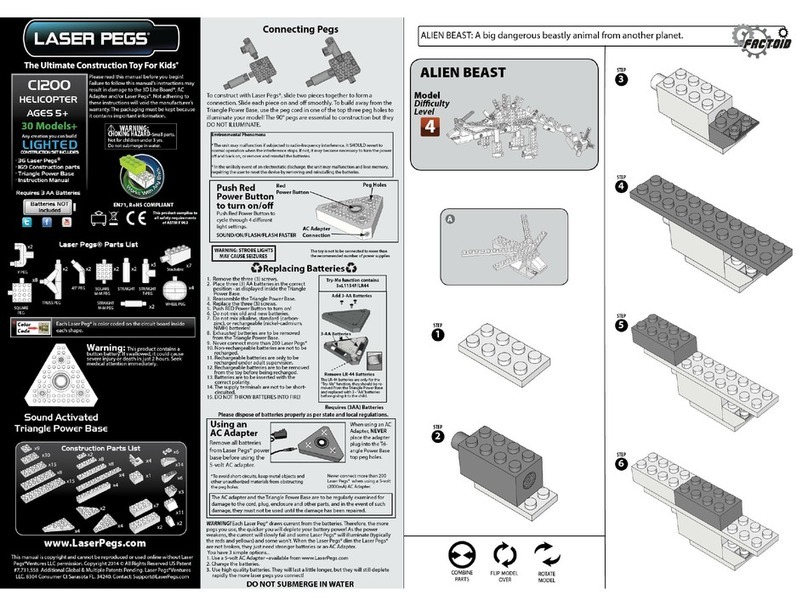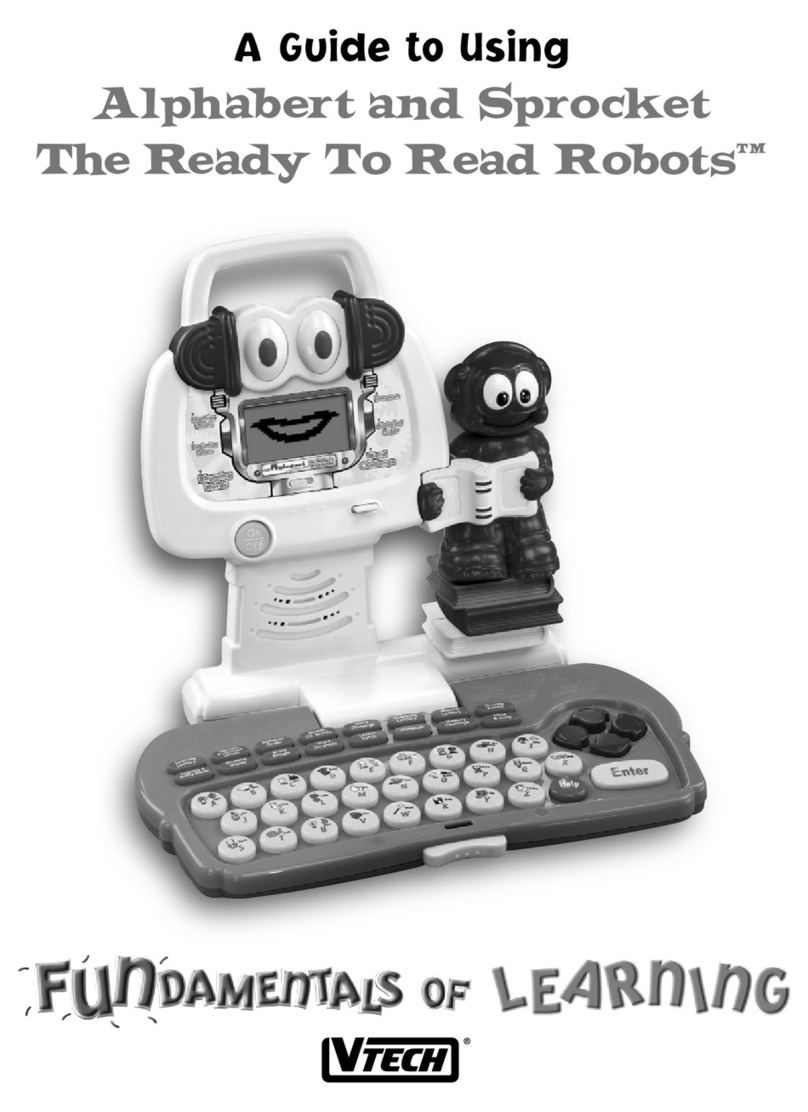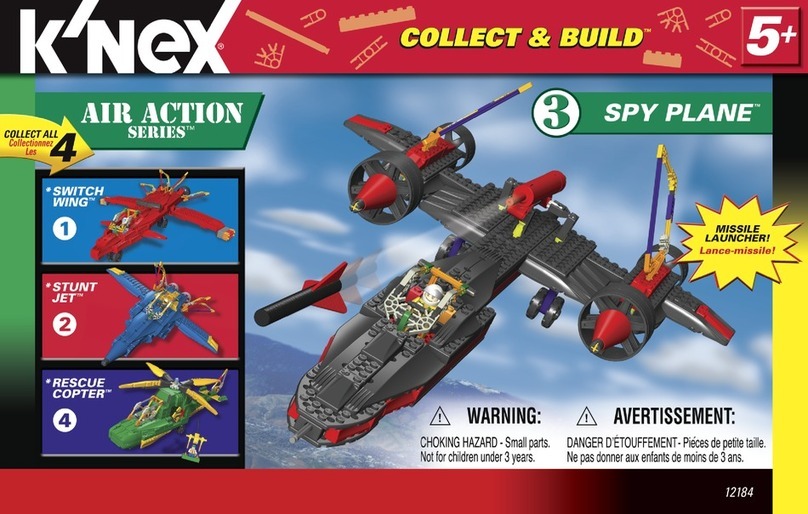MRC 0001619 User manual

HO Gauge DCC Diesel Sound Decoder
Fits Many Atlas/Kato/Athearn/Intermountain Locomotives
Item #0001619/1620/1621/1622/1623/1624
Thank you for purchasing our most advanced 16 bit DCC
locomotive sound decoder. Combined with any DCC
System, MRC Blackbox or Tech 6, our true live capture
digital sound decoder will make your model railroad come
to life.
•Synchronized prime mover sounds
•1.5 amp capacity
•4 different types of horns and bells
•Adjustable individual sound volumes (16 levels)
•Programmable either 2-digit or 4-digit addresses
•Programmable start voltage and top voltage
•Programmable acceleration and decelaration rates
•Programmable 14, 28, 128 speed steps
•Back EMF load control
•Service brake and dynamic brake sync with sound
•Supports read back address and CV values
•Advanced speed table control CV67-CV94
•Kick start voltage control CV65
•Easy function mapping
•17 light effects: ditch lights, mars light, gyra light,
strobe light, prime strobe light and on/off
•28 accessory functions (F1-F28)
•Supports advanced consisting (CV19)
•Supports programming on the main (OPS mode)
•Compatible with NMRA DCC standards
•Complies with Part 15 of FCC Rules
•Speaker included
•Dimensions: 73.0mm x 17.8mm x 7.7mm
PROGRAMMING
This decoder supports all program modes and read back features. With MRC
Prodigy Advance DCC you can read its address and CV value.
Printed in USA
SPEED TABLE CV67-CV94 FOR 28 SPEED STEPS
When CV29’s bit 4 is set to “1” it will use the speed table formed by CV67-CV94
to control speed (motor voltage). It allows you to setup each speed for all 28
speed steps. First, program CV29 to 18 for short addresses (1-127) or program
CV29 to 50 for long addresses (128-9999) to enable speed table control. Then set
throttle to 28 speed steps and run your loco at speed step 1. Use program CV on
the main to change CV67’s value (1-255) to adjust step 1’s speed. The kick voltage,
CV65 is only applied when the speed step changes from 0 to 1. You should switch
between 0 to 1 many times to check step 1’s speed. When done with CV67, select
speed step 2 and program CV68. CV68’s value must be greater then CV67’s. When
done with CV67-CV94, use read back CV to make sure their values are in increasing
order.
Note: When using MRC Prodigy Advance DCC to program addresses it will
automatically disable the speed table (set CV29’s bit 4 to “0”). Programming CV125
to 1 will also disable the speed table and re-program CV67-CV94 to a default linear
speed setting.
TROUBLE SHOOTING
If the loco is runing without sound click F12 to turn on the sound. Whenever
the decoder doesn’t work please use the program track to program CV# 125
with a value of 1 to restore the decoder to the factory settings. This should
bring the decoder to life with address #3. This decoder should perform well with all
DCC systems. The maximum DCC output should be less than 21 V. If the locomotive
does not respond to commands, it may have lost its address. Please re-program the
address and program CV19 to 0 (disable consist). If it responds too slowly, you
should clear its momentum by reprogramming CV3 and CV4 to zero. If step 1’s
speed is too high, you should program start voltage, CV2 to zero. If its top speed is
too slow, program top voltage CV5 to 31. You should also clean the track to improve
electrical pickup. Read your DCC system manual to learn how to program and
operate the decoder. For more information about registers/CVs and their functions,
please refer to the NMRA DCC Standard & Recommended Practices, RP-9.2.2. This
is available directly from the NMRA or their website at www.nmra.org.
FCC COMPLIANCE
This device complies with part 15 of the FCC Rules. Operation is subject to the
following two conditions. (1) This device may not cause harmful interference,
and (2) This device must accept any interference received, including interfer-
ence that may cause undesired operation.
RETURN PROCEDURE
This decoder carries a 6 month warranty against factory defects. This warranty
does not include abuse, misuse, neglect, improper installation, or any modifications
made to this decoder, including but not limited to the removal of the NMRA plug if
applicable. If it should become necessary to return the decoder for warranty repair/
replacement, please include a copy of the original sales receipt. Please
include a letter (printed clearly) with your name, address, daytime phone number,
and a detailed description of the problem you are experiencing. Please also include
a check or a money order for $11.00 to cover return shipping and handling. If the
decoder is no longer considered under warranty, then please include a check or a
money order for $35.00 to cover the cost of repair or replacement and return
shipping and handling. Be certain to return the decoder only.
Any questions regarding Warranty Policy can be directed to our Customer
Service Department by calling 732-225-6360 between the hours of 8:30am
and 6:00pm EST, or by emailing: rrtech@modelrectifier.com
Send the decoder to:
Model Rectifier Corporation
Attn: Parts & Service
80 Newfield Avenue
Edison, NJ 08837-3817 U.S.A
CV Description Range Default
CV1 Short address 1-127 3
CV2 Start voltage 0-63 10
CV3 Acceleration 0-63 0
CV4 Deceleration 0-63 0
CV5 Top voltage 0-32 32
CV6 Ultra slow speed enable f or speed step1 and 2 0-1 0
CV29 Basic configuration --- 2
CV7 Manufacturer version number --- 0
CV8 Manufacturer ID --- 143
CV17 Long address upper byte 192-231 192
CV18 Long address low er byte 0-255 3
CV19 Advanced consist address 0-127 0
CV37 0=normal, 1=F3 and F4 exchange 0-1 0
CV39 0=normal, 1=F5 and F6 exchange 0-1 0
CV42 0=normal, 1=F8 and F12 exchange 0-1 0
CV49 All sounds off / on 0-1 1
CV50 Horn type 0-3 0
CV51 Horn volume 0-15 12
CV52 Bell type 0-3 0
CV 53 Bell volume 0-15 12
CV54 Bell ring rate 0-50 3
CV55 Prime mover volume 0-15 12
CV56 Brake squeal volume 0-15 12
CV57 Dynamic brake volume 0-15 12
CV58 Air release volume 0-15 12
CV59 Air pump volume 0-15 12
CV60 Safety pop valve volume 0-15 12
CV61 Engine cooling fan volume 0-15 12
CV62 Coupling volume 0-15 12
CV 64 Rail w heel clack 0-15 12
CV65 Kick start voltage 0-63 63
CV67-94 28 speed steps table w hile CV29.4=1 1-255 linear
CV112 Back EMF start speed adjudstment 0-7 0
CV113 Back EMF Load control proportional gain Kp 0-31 20
CV114 Back EMF Load control integral gain Ki 0-31 10
CV115 Brake soundl type; 2=brake sound off 0-2 0
CV117 Headlight light effect 0-15 0
CV118-119 Accessory light mode 0-15 0
CV120 Light brightness 0-255 255
CV119 ACC2 light mode 0-6 0
CV121 Air compressor mode (1=change w ith engine rpm) 0-1 0
CV122 Diesel Notch mode, 0=auto, 3=manual 0-3 0
CV124 Back EMF Load control intensity (0=off) 0-255 0
CV 125 Programming to "1" w ill restore some CV's to f actor settings --- 0
0CV 21 When CV21=0, functions follow its ow n address. CV21=1,
functions follow the consist address ---

INSTALLATION
For newer locomotives with a circuit board and wires, simply remove the old circuit
board and follow the diagram to install the decoder. Hook up the front headlight to
the tabs marked as FL and COM. Hook up the rear headlight to the tabs marked as
RL and COM. For accessory light, hook up to ACC and COM.
The motor terminals must be isolated from the wheel pickups. The four pickup
wires go to pickup tabs. The motor wires go to motor tabs.
You can use speaker sizes from 18mm to 28mm. The larger speaker the better
sound quality. For locos with tight space, an 18mm can be mounted on the decoder.
If your loco has space for a larger speaker we recommend you use 28mm
speaker for a better sound quality. Always use 8 Ohm speakers.
If you use 1.5V bulbs or LED’s, you should connect a 1k ohm resistor in series to
one of the leads to limit current. Use CV120 to adjust the brightness.
OPERATION
The decoder has a default address #3. Select address #3 on your DCC. Release
service brake (F5) and dynamic brake (F6). You will hear the brake release
sound when you turn off F5. Move up the throttle and the loco should start to
move. If the loco does not move a speed 1 you can add more start voltage by
programming CV2 with a large number. You can program the acceleration
momentum CV3 and deceleration momentum CV4 to simulate the real train. The
decoder has start up and shut down features. If the loco was previously shut
down you have to start up the engine first. Press any function key to start up the
engine. To shut down the engine you must bring the loco to idle and then press
F8 three times.
This decoder has 4 different horns and bells. You can use F19 or program CV50
to select horn. And use F18 or program CV52 to select bell.
This decoder has an easy function exchange feature (re-mapping) that allows
certain pairs of functions to be swapped. For example, program CV37 with a
value of 1 will make F3 and F4 exchanged.
The decoder default is set to automatic notch mode. You can program CV122 to
3 for manual notch mode for realistic operation. In the manual notch mode the
notch level is not controlled by loco speed. It is controlled by F9 ( notch up) and
F8 ( notch down).
To make traction air compressor’s speed synchronize to the prime mover,
program CV121 with a value of 1. For a constant speed program CV121 with a
value of 0.
SERVICE BRAKING
To apply service brake set throttle to zero and press F5. The loco will slow down
fast and you will hear the brake squeal. You can pump the brake by turning F5
on and off to stop the loco at desired location. The brake rate is proportional to
deceleration rate that you program in CV4. If you forget to turn off F5 and move
the throttle up. The loco will move. However, when you release the throttle the
service brake will apply again. The service brake can only operate when throttle
is at 0. If you don’t hear the brake sound program CV115 with a value of 2.
DYNAMIC BRAKING
You can use dynamic brake F6 to reduce the speed. When you turn on F6 the
prime mover will notch down to 1 and you will hear the dynamic brake sound and
the loco will reduce its speed. When you release F6 the loco will speed up to the
orignal speed. If you forget to turn off F6 and move throttle up it will automatically
disable the dynamic brake and loco will start to move. To apply dynamic brake
again you have to cycle F6 off and on.
BACK EMF LOAD CONTROL (PID CONTROLLER)
This decoder is equipped with adjustable back EMF load control feature. It is a
closed loop speed control. With back EMF load control the locomotive will maintain its
speed regardless of pulling up hill or driving down hill. You may program the back EMF
load control intensity, CV124, to a lower value to get less back EMF load control. This
will enable the locomotive to slow down during uphill travel like a real locomotive.
The PID controller contains three components: proportional gain (CV113); the
integral gain (CV114); and derivative gain (fixed). Designing (tuning) a PID
controller is a kind of “rocket science”. So we optimized these gains at the factory
but still give the customer final adjustments. We recommend that you do not change
these settings. Too much gain may cause the motor to oscilate (become unstable).
Too little gain may cause a slow response. Additional knowledge of PID feedback
control is required before attempting to adjust CV113 and CV114. If CV113 and CV114
are programmed incorrectly, the locomotive will not run smoothly. Program CV125 to
“1” will automatically restore the default PID controller settings. If you can not get the
PID controller work properly or you don’t know to tune it you should turn off the Back
EMF load control by program CV124 with a value of 0.
LIGHT EFFECT PROGRAMMING CHART FOR CV#117/118/119
The decoder has 17 different lights effects. CV 117 controls both front and rear
headlight effect. Use F0 to turn on or off the Headlights. CV118/CV119 control
ACC1/ACC2 light effect. Use F3 to turn on or off ACC1 and ACC2. For ditch light
operation you must program Cv118 and CV119 to the same ditch light type. In type
A the ditch lights will flash when F2 (horn) or F3 is on. In type B the ditch lights
will flash when F2 is on and stay on when F3 is on.
Decoder Prime mover
SD39, SD40, SD40A, SD40-2, SD40T-2, SD45. SDP45, SD45X, SD45-2,
SD45T-2, F45, FP45, DDA40X, GP15T, GP39, GP39-2, GP40, GP40-2
SW1000, SW1001, SW1500, SW1504, MP15DC, MP15AC, MP15T,
GP38, GP38-2, SD38, SD38-2, GP15AC, GP15-1
0001621 EMD710 SD70AC, SD70M-2
0001622 ALCO 244
0001623 ALCO 539T
F2A/B, F3A/B, F7A/B, F9A/B, BL1, BL2, FP7, FL9, FT, GP7, GP9, GP18,
GP28, E6, E7, E8, E9, NW2, NW3, NW4, SW1, SW7, SW8, SW9, SW600,
SW900, SW1200
Suitable for the locomotive
RS- 3, PA 1, PB1
S-2, S-4, RS-1, RSC-1, RSD-1, DL-105, DL107, DL-108, DL-109, DL-110
0001619 EMD645E
0001620 EMD645
0001624 EMD567
CV117/118/119 Light effect
0 Norm al on/off
1 Dyno effect (fading)
2 Dim , bright, off cycle
3 Rule 17
4 Both headlights on
5 Ditch Light type A
6Ditch Light type B
7 Gyralite
8 Mars Light
9 Prime strato light
10 Single strobe light
11 Double strobe light
12 Rotating beacon
13 Fred Rear End Flashing
14 Firebox Flicker A
15 Firebox Flicker B
16 Engine Exhaust Flicker
Function Idle/Moving
F0 Headlight on/off
F1 Bell on/off
F2 Horn
F3 Accessory light on/off
F4 Coupling 1
F5 Brake handle: brake when moving, brake release when idle
F6 Dynam ic brake on/off: turn on will reduce speed
F7 Air hose firing/uncoupling lever
F8 3 times will shut down when in idle / Manual notch down
F9 Engine cooling fan / Manual notch up
F10 Rail wheel clack (only moving)
F11 Traction air compressor
F12 prime mover on/off
F13 Short air release
F14 Coupler crash
F15 Air compres sor
F16 Flange squeal
F17 Air release
F18 Change bell type (use F1 to turn off bell after adjustment)
F19 Horn type select
F20 Associated loco sound
F21 Change bell volume (use F1 to turn off bell after adjustment)
F22 Change horn volume
F23 Change prime mover volume
F24 Safety valve pop
F25 Air release
F26 Flange noise
F27 Sand drop
F28 Air compressor speed mode change (CV 121) / with Air release
com
com
pick up pick up
pick up pick up
rear light
motor
motor
ACC1
ACC2
front light
speaker connector
This manual suits for next models
5
Other MRC Toy manuals
Popular Toy manuals by other brands

De Agostini
De Agostini MODEL SPACE Honda CB750 FOUR Assembly guide
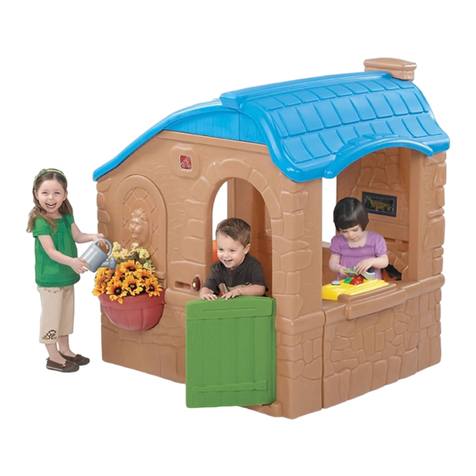
Step 2
Step 2 Countryside Cottage Assembly instructions

Modeltech
Modeltech Fun Fighters P-51 ARF Assembly instructions

V-tech
V-tech ZoomiZooz Swing Parents' guide
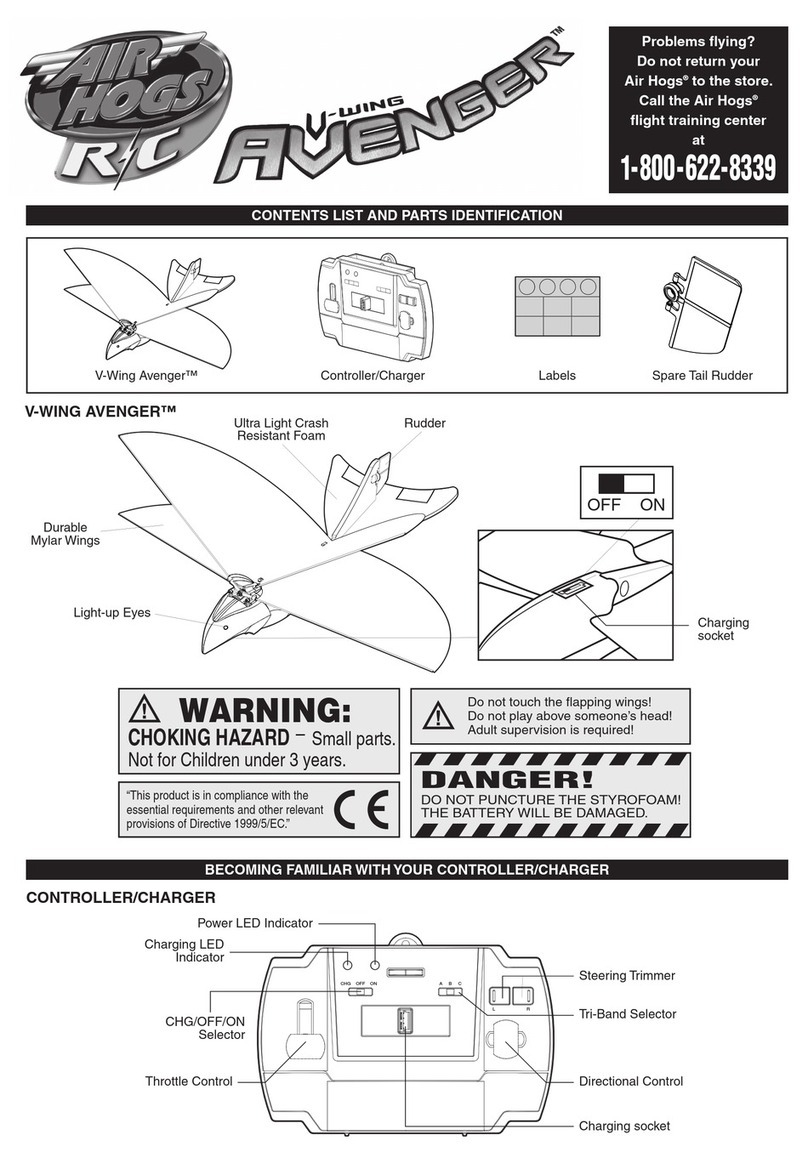
Air Hogs
Air Hogs Air Hogs RC V-Wing Avenger User instructions

ThinkGizmos
ThinkGizmos TG723 user manual
